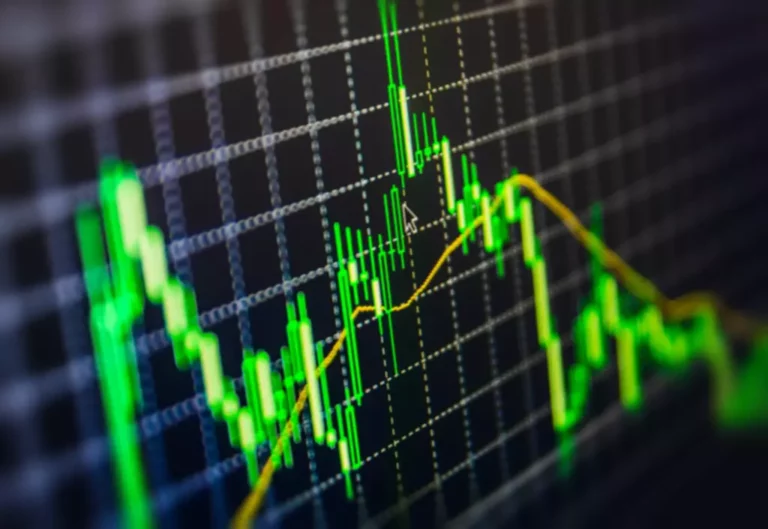The age of the fund is usable as a proxy for the reliability of the fund. A fund that has been around for a substantial amount of time must have a confirmed observe record. However, it’s paramount that the investor should understand how to choose the best ETF. He ought to base his selection upon varied underlying qualities of the ETF. As with all investments, monitor the ETFs for suitability and efficiency and exit if they don’t measure up.
The main distinction between ETFs and other forms of index funds is that ETFs don’t attempt to outperform their corresponding index, but merely replicate the performance of the Index. An ETF, or trade traded fund, is a marketable security that tracks an index, a commodity, bonds, or a basket of property like an index fund. Most ETFs monitor indices, that means they purpose to match the performance of an inventory of stocks or bonds such as the Nifty 50 Index or the BHARAT Bond ETF. Tracking error signifies how intently the returns compare to those of their benchmarks.
ETFs could be highly effective instruments in achieving your financial targets, however conducting thorough analysis is important. As you navigate the huge panorama of ETF choices, bear in mind to prioritize factors like trading volumes, monitoring distinction, monitoring error, and prices. By making knowledgeable selections, you can harness the potential of ETFs to boost your investment journey and work in the course of your monetary aspirations. Now, before learning about how to choose an ETF for newbies, let’s speak about passive investing. Passive investing is about following an index– no active buy/sell selections are taken by the investor.

Investing in ETFs presents you the same exposure to diverse devices like equity, debt, commodities and international equities. Millennials displaying risk propensity select ETFs mirroring fairness indices to realize from the market movement. Now that you’ve got got zeroed in on the asset class, for example, fairness must now determine the index. Some buyers https://www.xcritical.in/ opt for large-cap indices corresponding to Nifty or Sensex or sectoral indices corresponding to banking or expertise or another throughout the fairness space. An ETF investment isn’t a single inventory, however a basket of stocks, bonds, or different property traded like a stock, providing instant diversification and flexibility.
How To Choose On An Etf?
It’s like making an attempt to foretell your opponent’s strategy with limited data. International ETFs give consideration to particular international locations or regions exterior of the investor’s home market. These ETFs provide publicity to worldwide markets and allow traders to diversify their portfolios globally. Yes, traders can purchase partial shares of an ETF on the stock exchange.

For instance, Mutual Funds in India provide Gold ETFs, where the underlying investment is in physical gold. When compared to other fund varieties, ETFs usually have lower expense ratios, since they are not actively managed. When comparing ETFs of the identical calibre, you should choose one which entails a lower expense ratio. While traders don’t physically own the commodities, commodity ETFs typically use futures contracts or different by-product devices to duplicate the worth movements of the underlying bodily belongings. Like other ETFs, commodity ETFs disclose their holdings often, allowing investors to know the precise commodities or futures contracts included in the fund. Some examples of commodity ETFs are the Energy Select Sector SPDR Fund (XLE), iShares Gold Trust (IAU), United States Oil Fund, LP (USO), Invesco DB Agriculture Fund (DBA), and many extra.
Age Of The Etf
These bonds could encompass authorities bonds, corporate bonds, and municipal bonds issued by states and local entities, offering diversification in the fixed-income house. Both these ETFs could either underperform or overperform their underlying index. The deviation in performance can be because of faulty replication or the expense ratio that eats into your potential features. Let’s take a look on the differences between Exchange Traded Funds (ETFs) and particular person stocks and what unique options set these two funding options apart. ETFs normally tend to have low expense ratios since they monitor an underlying index or commodity.

For instance, if an ETF replicates the Sensex, it’ll have all of the guards in the same ratio because the Sensex in its basket. On the opposite hand, some ETFs will pattern some securities from the index and make an ETF. The commerce quantity could possibly be lower because it’s comparatively new or low due to weak demand. Newly launched ETFs typically have a decrease commerce volume, with no definite reason.
Market Depth
From the primary ETF itemizing in 2002, India today has 152 ETFs listed on the National Stock Exchange of India (NSE), offering an enormous array of funding choices. The Indian fairness markets have been on a gradual rise after the Covid hit. Consequently, the ETFs also witnessed record-breaking inflows throughout the identical period. Following the above steps and preserving in mind your funding strategy and objectives is the greatest way to go forward.

The investment goal bites the dust as the sensation of notional loss eats into their monetary planning. For most particular person traders, funding in ETFs could be a good option since they are low-risk choices that additionally give stock market exposure. However, one should contemplate their danger appetite and funding goals before investing. An ETF is a tradable instrument that tracks an index like Nifty/Sensex, a commodity like gold, bonds, or a basket of assets. The first ETF in India was created in 2001 when Benchmark Mutual Fund launched the Nifty ETF Fund with an outlined objective to track the efficiency of the Nifty 50 index. Since then, the ETF trade in India has witnessed gradual but regular progress.
That means you ought to purchase or promote ETF shares all through the buying and selling day at prevailing market prices. It’s like having the agility of a nimble boxer, supplying you with the power to react to market actions in real-time. On the opposite hand, Mutual Funds have a extra conventional strategy, permitting you to buy or sell shares on the end of the trading day at the internet asset worth (NAV) price. Because they are tied to a specific index, ETFs are most likely to cover a discrete variety of stocks, versus a mutual fund whose scope of funding is subject to continual change.
And one of the most apparent prices of proudly owning an ETF is its expense ratio—the percentage of your investment that goes towards covering the ETF manager’s prices. Alternatively, to measure tracking error you can even take a look at the ETF’s most up-to-date factsheet. These reviews will typically embody the efficiency of the ETF and the efficiency of the index on the identical chart. Ideally, these two lines ought to stay very close to 1 another all through the fund’s history. If there are important periods during which the ETF outperforms or underperforms the index, that could be a sign that the ETF supervisor isn’t matching the index portfolio. Exchange-traded funds (ETFs) have turn into a well-liked investing tool for many investors and have come a great distance from after they started their journey in India twenty years ago.
The liquidity of an ETF is influenced by the liquidity of the underlying securities, whereas trading volume is affected by investor activity. Liquidity in the primary market depends upon the worth of the underlying shares that again up the ETF. While liquidity in the secondary market depends upon the load of ETF shares traded.
Sovereign Gold Bonds Vs Gold Etfs
The whole price of owning an ETF needs to be in contrast with the expense ratio of the FoF to find out which is more environment friendly,“ mentioned Kukreja. ETFs provide prompt diversification by holding a basket of securities that usually track a specific index. This permits buyers to unfold their risk throughout a quantity of companies, sectors, or asset lessons. By investing in a single ETF, buyers can achieve publicity to a variety of securities, decreasing the impact of any individual security’s performance on their overall investment.
While sector ETFs are targeted on a specific business, they sometimes hold a diversified portfolio of stocks inside that sector. Due to this diversification, the influence of poor efficiency from individual corporations is reduced. Axis NIFTY Bank ETF (G), DSP Nifty Midcap one hundred fifty Quality 50 ETF (G), and Mirae Asset Nifty India Manufacturing ETF (G) are a couple of examples of sector ETFs.
- While ETFs are generally tax-efficient, buyers may still face tax implications.
- The trading value of an ETF is predicated on the web asset worth of the underlying shares that an ETF represents.
- Higher trading volume signifies higher liquidity, as it implies a larger variety of consumers and sellers.
- Passive investing can be achieved through vehicles like index funds or ETFs.
- Unlike common mutual funds, an ETF trades like a typical stock on a inventory change.
When evaluating similar-quality ETFs, go for the one with the lowest expense ratio. Remember, every rupee saved on expenses is an extra rupee contributing to your overall returns. When you put money into an ETF that tracks a specific index, you want its returns to intently mirror the performance of that index. However, trading costs, points purchasing/selling the underlying, money steadiness, corporate actions, and so forth. can cause variations in returns between the ETF and the index. This discrepancy is recognized as tracking difference and the volatility in tracking distinction is tracked via tracking error.
